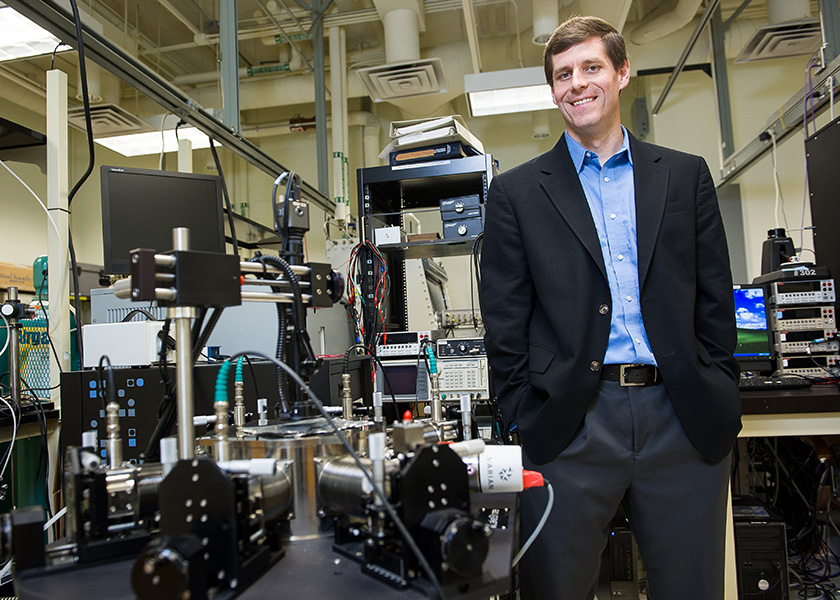Materials Research Science and Engineering Center Receives $18 Million NSF Grant
Six-year award will support one of the longest continually funded materials research centers in the country
Northwestern University’s Materials Research Science and Engineering Center (NU-MRSEC), which is among the longest continually funded materials research centers in the country, has received a six-year, $18 million grant from the National Science Foundation (NSF).
The center, directed by Northwestern Engineering’s Mark Hersam, is one of nine Materials Research Science and Engineering Centers in the nation to be funded by NSF this year.
The NU-MRSEC advances world-class materials research, education, and outreach through active interdisciplinary collaborations within the center and with external partners in academia, industry, national laboratories, and museums, both domestically and abroad. The NU-MRSEC’s intellectual merit resides primarily within its interdisciplinary research groups (IRGs) and seed-funded projects that promote dynamic evolution of the center’s research.

One new IRG project supported by the grant, “Bioprogrammable Materials via Cell-Free Synthetic Biology” will develop soft composite materials that incorporate biological machinery in a cell-free platform, removing the nourishment and care demands of living tissue. Achieving functionality of living biological systems in autonomous materials has direct implications for sustainable agriculture, water treatment, smart clothing, and wound healing.
Another new IRG project, “Orchestrated Iontronics via Dynamic Hybrid Ionic/Electronic Conductors,” will design materials that concurrently conduct ions and electrons, behaving in a manner that mimics biological neurons. These hybrid ionic/electronic conductors allow brain-inspired computation that will accelerate advances in artificial intelligence, robotics, and bioelectronics.
“By incorporating these research advances into innovative pedagogy, the NU-MRSEC achieves broad impact through professional development of graduate students and postdocs, research experiences for undergraduates and teachers, and outreach to K-12 students and the general public,” said Hersam, Walter P. Murphy Professor of Materials Science and Engineering at the McCormick School of Engineering. “These activities are enhanced through collaborations with our external partners, including Argonne National Laboratory, Art Institute of Chicago, Chicago Museum of Science and Industry, Chicago Field Museum of Natural History, and others.”
The NU-MRSEC and eight other centers will split a $162 million investment from the NSF. The centers aim to transform fundamental scientific breakthroughs into tangible benefits for multiple sectors of the US economy and innovations that can be produced on factory floors of the future.
"NSF's Materials Research Science and Engineering Centers will help us seize new opportunities in semiconductors, biotech, quantum information and more, addressing the needs of our society and advancing critical emerging technologies," NSF director Sethuraman Panchanathan said. "They will do so by expanding and enriching the ecosystem of innovation across our country."
Under NSF support, the NU‐MRSEC has published over 1,000 peer‐reviewed papers and has 80 pending/issued patents (approximately half of which have been licensed) over the past five years. These papers are highly collaborative, with the majority of IRG publications possessing multiple NU‐MRSEC faculty authors.
In addition, NU‐MRSEC research has been broadly influential. Over the past five years, NU‐MRSEC publications have been cited an estimated 22,000 times, which is among the highest citation numbers in the MRSEC program. Previous NU‐MRSEC IRGs have led to new subfields of materials science in the areas of mixed‐dimensional heterojunctions and heteroanionic materials.